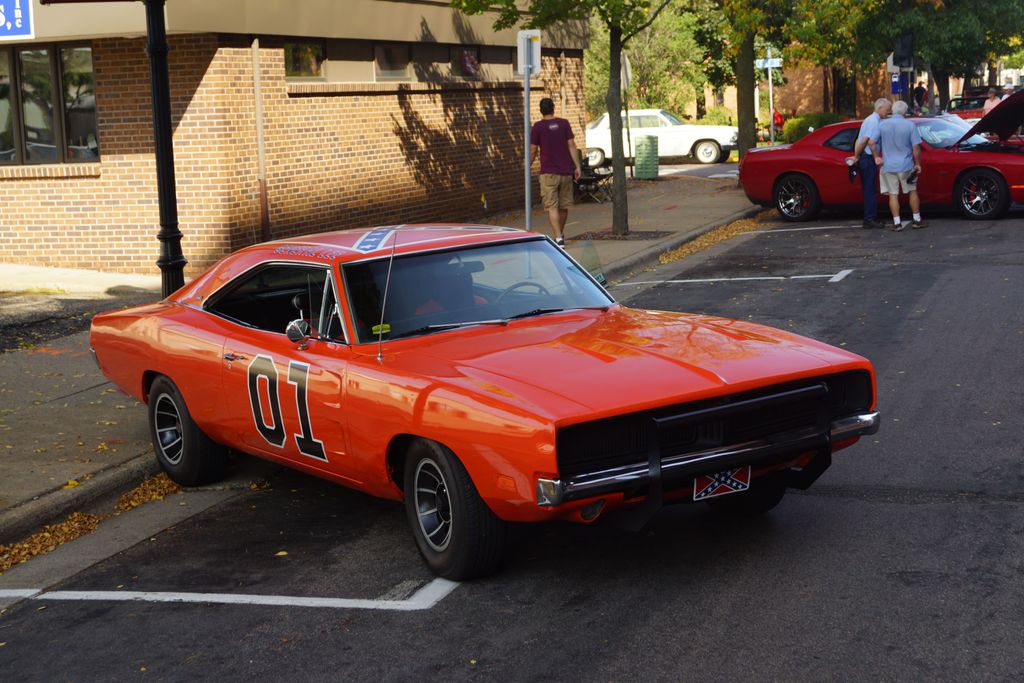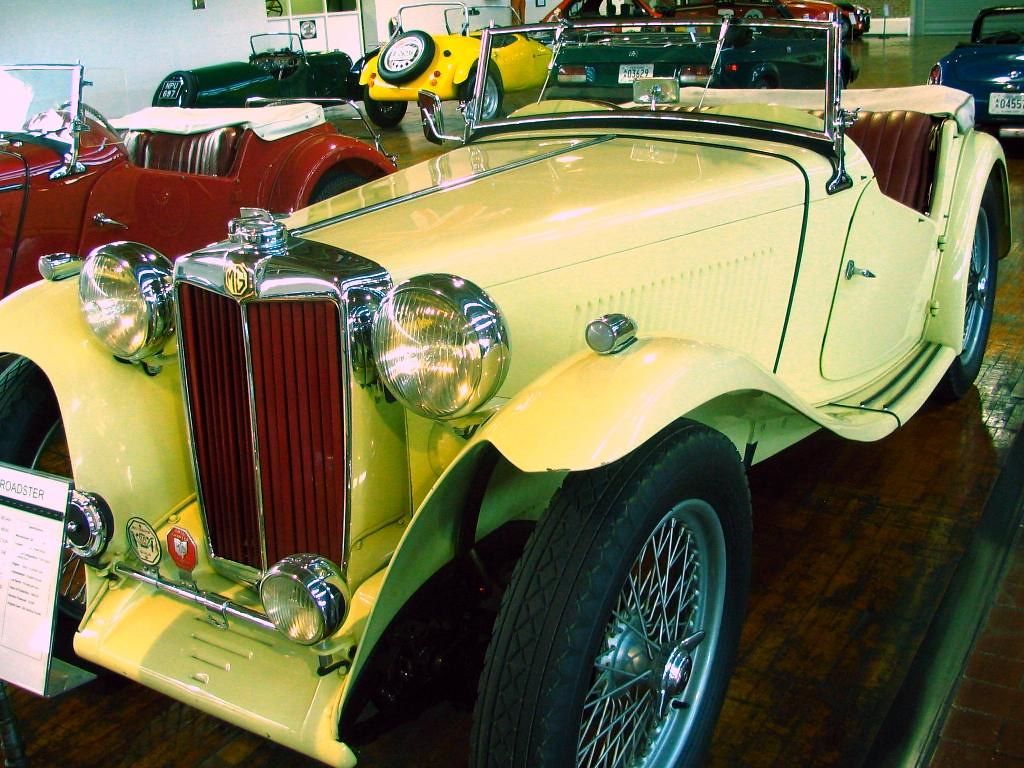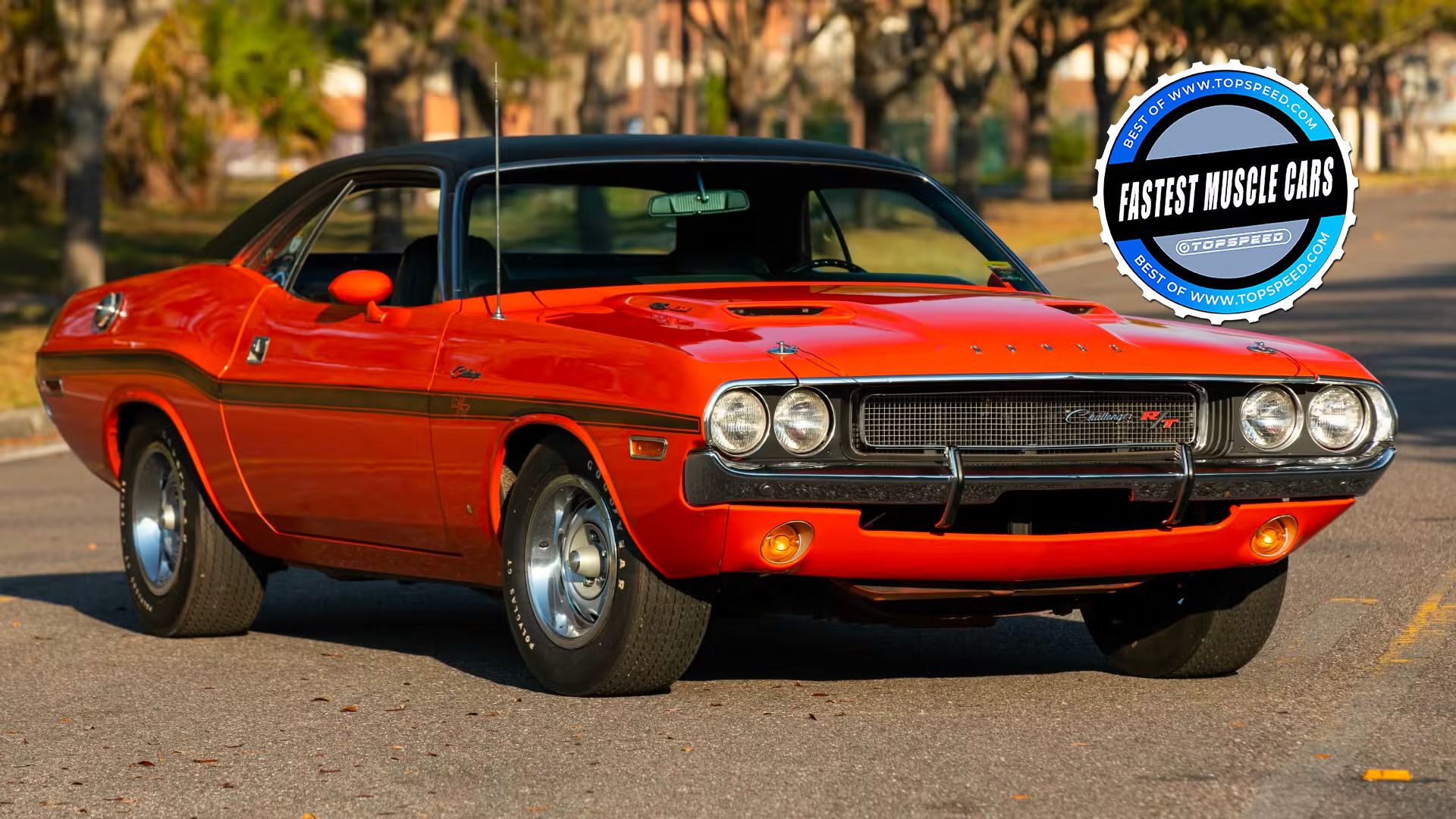
The golden age of American performance, a vibrant era spanning the 1960s and early 1970s, was a time when automakers truly pushed the envelope. They crafted thrilling machines with big-cube engines, lightweight bodies, and a raw, visceral appeal that captured the imagination of a generation. These were the kings of the road, symbols of power, speed, and undeniable style, instantly recognizable for their aggressive stance and roaring V8s.
Yet, as with all golden eras, this one eventually came to a close, not with a sudden bang, but a gradual, almost melancholic fade. While some iconic muscle cars managed to cling to their legendary status, others, equally potent and charismatic in their prime, found themselves quietly stepping out of the spotlight. They vanished not because they weren’t great, but because the times, tastes, and regulations began to shift beneath their very tires.
Join us on a nostalgic journey as we pull back the curtain on nine magnificent muscle cars that, for various reasons, became largely overlooked or forgotten. These are the unsung heroes and the mighty machines that, despite their once-powerful presence, eventually faded with the end of an era, now often overshadowed by more prominent rivals or simply victims of a changing automotive landscape. It’s time to give these faded giants the recognition they richly deserve.
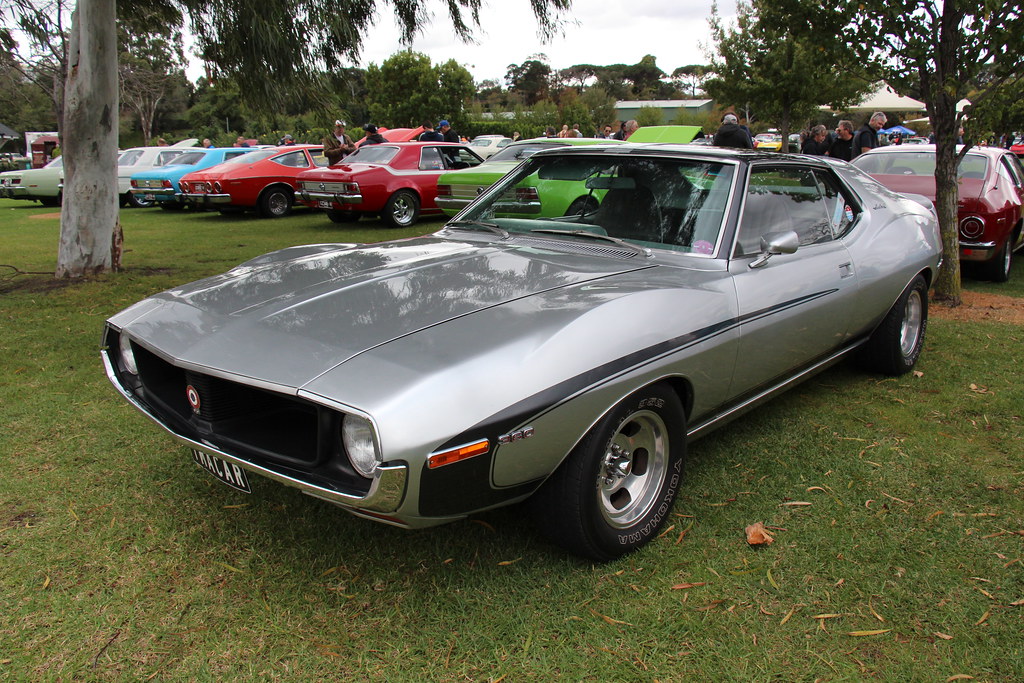
1. **AMC Javelin: The Distinctive Underdog That Couldn’t Quite Break Through**The AMC Javelin, produced from 1968 to 1974, always had a distinct design that aimed to set it apart from the sea of Mustangs and Camaros. With its sleek lines and formidable presence, it wasn’t just another contender; it was AMC’s bold statement in the highly competitive pony car segment. This wasn’t a car that blended in; it was designed to be noticed, and in the world of Trans-Am racing, it certainly made its mark, achieving notable success against its more established rivals.
Despite its unique appeal and a genuine capability on the track, the Javelin never quite managed to achieve the widespread popularity of its Detroit-based competitors. It was produced in comparatively limited numbers, a factor that, while contributing to its rarity today, also played a significant role in its eventual fade from mainstream memory. The challenge of a smaller dealer network and a less established performance image often meant it was battling uphill from the start.
The broader decline of the AMC brand only hastened the Javelin’s fade from public consciousness. As the company struggled in the face of larger, more dominant automakers, so too did its performance offerings. The Javelin, despite its merits, often found itself overshadowed by the sheer marketing might and cultural ubiquity of models like the Mustang and the Camaro, making it a lesser-known chapter in muscle car lore.
Today, the AMC Javelin has become a favorite among collectors who appreciate its unique styling and historical significance. It represents a refreshing alternative for those looking for something different, a testament to American Motors’ valiant effort to carve out its niche in the high-performance market. It’s a muscle car that, while once overlooked, now stands as a symbol of an era when every automaker aimed for a piece of the performance pie.
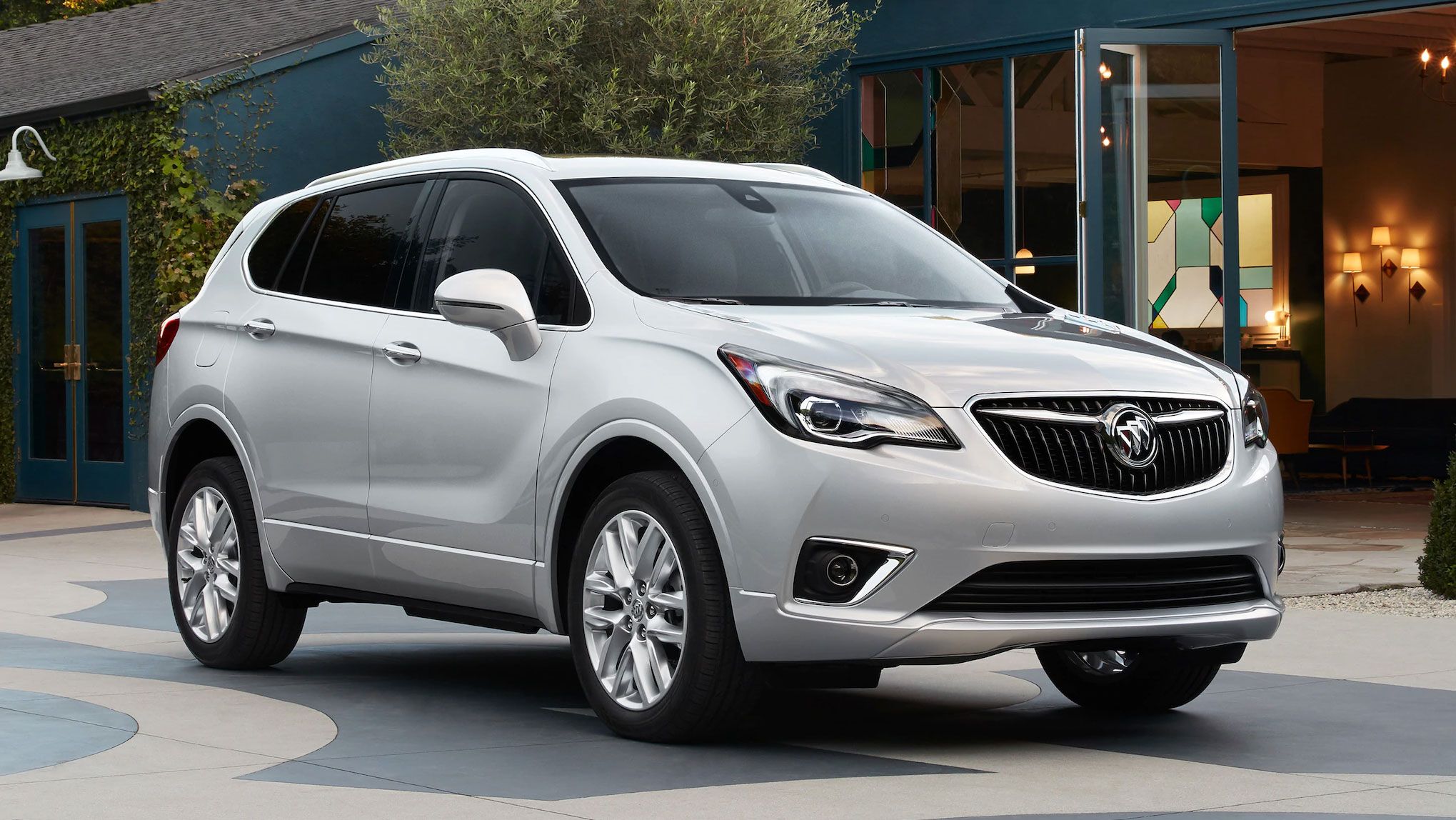
2. **Buick GSX: The Luxurious Brute That Roared Too Softly**The Buick GSX, particularly the formidable Stage 1, was a truly unique beast of the muscle car era. It wasn’t just about raw power; it was a sophisticated blend of luxury and a relentless 455-cubic-inch engine, officially rated at 360 horsepower but renowned for producing a veritable mountain of torque. This was the muscle car equivalent of a linebacker in a tuxedo, offering exhilarating performance while still providing creature comforts like air conditioning, setting it apart from its more spartan competitors.
Despite its impressive credentials and the ability to outpace many better-known rivals, the Buick GSX faced an identity crisis. Buick had a well-established reputation as a luxury brand, and this image often clashed with the no-holds-barred muscle car ethos. The GSX, while potent, seemed somewhat out of place in a market largely dominated by more rebellious and overtly aggressive machines. This perceived disconnect hindered its ability to capture the same lasting appeal as its contemporaries.
Buick’s muscle flagship, despite its undeniable performance, was regrettably short-lived. Its tenure was impacted by a confluence of factors that began to squeeze the entire performance market. Rising gas prices, the looming threat of the 1973 oil crisis, and the tightening web of regulations made it increasingly difficult to justify such high-performance, gas-guzzling models, even for a brand known for its more refined offerings.
Today, the Buick GSX remains a fascinating, albeit lesser-known, player in the muscle car world. Its ability to blend potent performance with a touch of upscale comfort has earned it a reputation as the “sleeper that roared” among enthusiasts. While Buick itself later distanced itself from high-performance badges, the GSX stands as a testament to a time when even luxury brands dared to flex serious muscle, a powerful memory that many still cherish.

3. **Chevrolet Chevelle Malibu SS: The Early Pioneer Eclipsed by Its Own Evolution**The early Chevrolet Chevelle Malibu SS models, from 1964 to 1967, played a crucial role in the nascent stages of the muscle car era. They offered respectable performance and were popular choices for those seeking a stylish and capable everyday driver with a hint of power under the hood. These cars set the stage for the Chevelle’s incredible run, establishing a foundation of what a mid-sized performance car could be for Chevrolet.
However, as the muscle car landscape rapidly evolved, these initial iterations of the Malibu SS found themselves in a unique predicament. They possessed decent performance for their time, but they hadn’t yet embraced the aggressive, in-your-face styling that would come to define the genre in later years. Their aesthetics were more restrained, less overtly muscular than the machines that would soon dominate drag strips and main streets alike.
As the Chevelle lineup progressed, introducing more powerful engines and bolder designs, these early versions quickly became overshadowed. The legendary 1968-1972 models, with their more formidable presence and enhanced performance capabilities, essentially pushed their predecessors into the background. Muscle car enthusiasts, naturally drawn to the most potent and visually striking options, began to overlook the early Malibu SS, favoring the more muscular and aggressive iterations.
Consequently, the Chevrolet Chevelle Malibu SS from these foundational years has largely faded into the background of muscle car history. It’s a testament to the rapid pace of innovation and the ever-escalating horsepower wars of the era. While still a fine machine, its place as a pioneering, yet ultimately overshadowed, model makes it a fascinating, if sometimes forgotten, chapter in the storied Chevelle legacy.
Car Model Information: 2023 Nissan Rogue SV
Name: Chevrolet Chevelle
Caption: 1970 Chevrolet Chevelle SS 396 Sport Coupe
Manufacturer: Chevrolet
Production: 1963–1977
ModelYears: 1964–1977
Class: Mid-size
Platform: GM A platform (RWD)
Layout: FR layout
Successor: Chevrolet Malibu
Categories: 1970s cars, All articles needing additional references, All articles that may contain original research, All articles with specifically marked weasel-worded phrases, All articles with unsourced statements
Summary: The Chevrolet Chevelle is a mid-sized automobile that was produced by the Chevrolet division of General Motors (GM) in three generations for the 1964 to 1977 model years. Part of the GM A-body platform, the Chevelle was one of Chevrolet’s most successful nameplates. Body styles included coupes, sedans, convertibles, and station wagons. The “Super Sport” versions were produced through the 1973 model year and Lagunas from 1973 through to 1976.
After a four-year absence, the El Camino was reintroduced as part of the new Chevelle lineup in 1964.
From 1964 to 1969, GM of Canada sold a modified version of the Chevelle that included a Pontiac-style grille, and a LeMans instrument panel, marketed as the Beaumont.
The Malibu was the top-of-the-line model to 1972, and completely replaced the Chevelle nameplate starting with the redesigned, and downsized 1978 model year.
Get more information about: Chevrolet Chevelle
Buying a high-performing used car >>>
Brand: Chevrolet Model: Chevelle Malibu SS
Price: $21,810 Mileage: 17,649 mi.
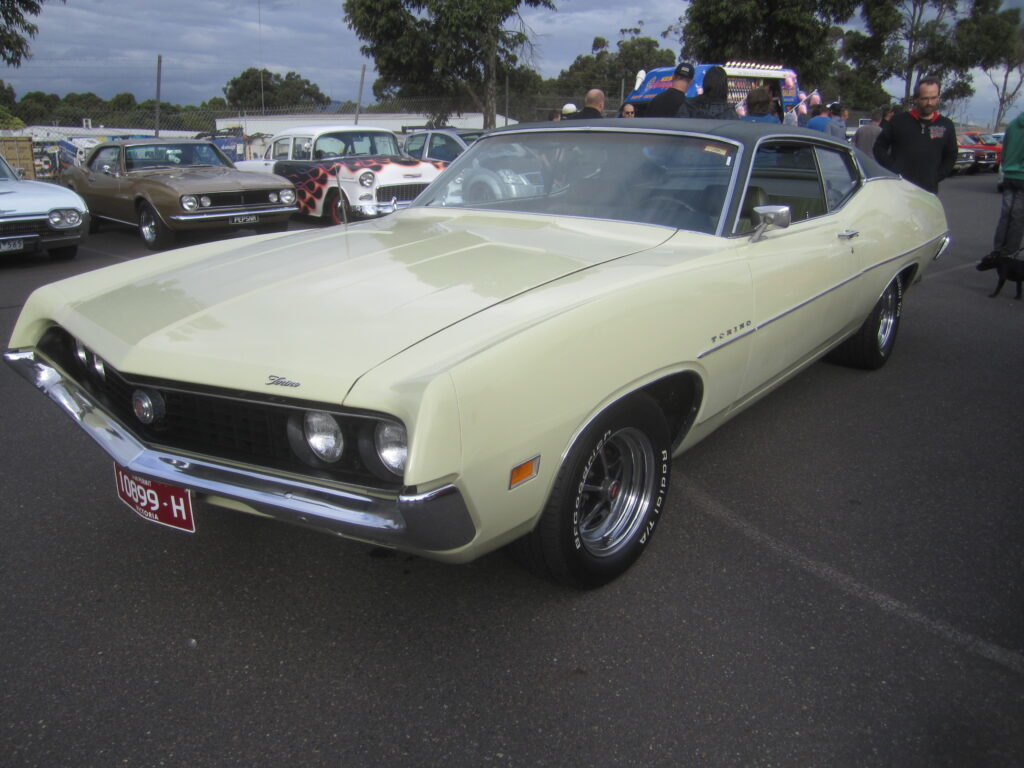
4. **Ford Torino GT: The NASCAR Star That Lost Its Way on the Street**The Ford Torino GT had a shining, albeit brief, moment of glory, particularly on the high-banks of NASCAR tracks. It was a formidable competitor, showcasing Ford’s engineering prowess and commitment to performance in the late 1960s and early 1970s. This was a car that could run with the best, demonstrating its speed and capability where it mattered most: under the intense pressure of professional racing.
However, the Torino GT’s design philosophy ultimately created a disconnect with the core muscle car audience. It was conceived to be larger and more comfortable than its compact, track-focused brethren like the Mustang. This emphasis on size and comfort, while appealing to some, didn’t quite resonate with the hardcore muscle car crowd who primarily sought raw, unadulterated power and aggressive styling in a more nimble package.
Over time, the Torino GT’s appeal dwindled as other, more focused Ford models stole the spotlight. The Mustang continued its reign as the brand’s performance icon, while the larger, more luxurious “personal luxury cars” began to cater to a different segment of the market. The Torino GT, caught between these evolving trends, struggled to maintain its niche and its distinct identity in a rapidly changing automotive landscape.
Today, the Ford Torino GT is often a forgotten chapter in Ford’s rich muscle car history. It stands as an intriguing example of a car with immense potential and a strong racing pedigree that, for various reasons, couldn’t quite translate its track success into lasting street-level adoration. For those in the know, however, it remains a powerful reminder of Ford’s diverse performance offerings during a truly unforgettable era.
Car Model Information: 2021 Volkswagen Tiguan 2.0T SE R-Line Black
Aka: Ford Fairlane (Venezuela)
Name: Ford Torino
Caption: 1970 Ford Torino Cobra SportsRoof
Manufacturer: Ford Motor Company
Production: 1968–1976
Class: Mid-size car,muscle car
Layout: FR layout
Related: Mercury Montego
Assembly: ubl
Predecessor: Ford Fairlane (Americas)
Successor: Ford LTD II
Categories: 1960s cars, 1970s cars, All Wikipedia articles written in American English, All articles with vague or ambiguous time, Articles with short description
Summary: The Ford Torino is an automobile that was produced by Ford for the North American market between 1968 and 1976. It was a competitor in the intermediate market segment and essentially a twin to the Mercury Montego line.
Just as the Ford LTD had been the upscale version of the Ford Galaxie, the Torino was initially an upscale variation of the intermediate-sized Ford Fairlane. In the 1968 and 1969 model years, the intermediate Ford line consisted of lower-trim Fairlanes and its subseries, the upper-trim Torino models. In 1970, Torino became the primary name for Ford’s intermediate, and the Fairlane was now a subseries of the Torino. In 1971, the Fairlane name was dropped altogether, and all Ford intermediates were called Torino.
Most Torinos were conventional cars, and generally the most popular models were the four-door sedans and two-door hardtops. However, Ford produced some high-performance “muscle car” versions of the Torino by fitting them with large powerful engines, such as the 428 cu in (7.0 L) and 429 cu in (7.0 L) “Cobra-Jet” engines. Ford also chose the Torino as the base for its NASCAR entrants, and it has a successful racing heritage.
Get more information about: Ford Torino
Buying a high-performing used car >>>
Brand: Ford Model: Torino GT
Price: $16,773 Mileage: 68,625 mi.
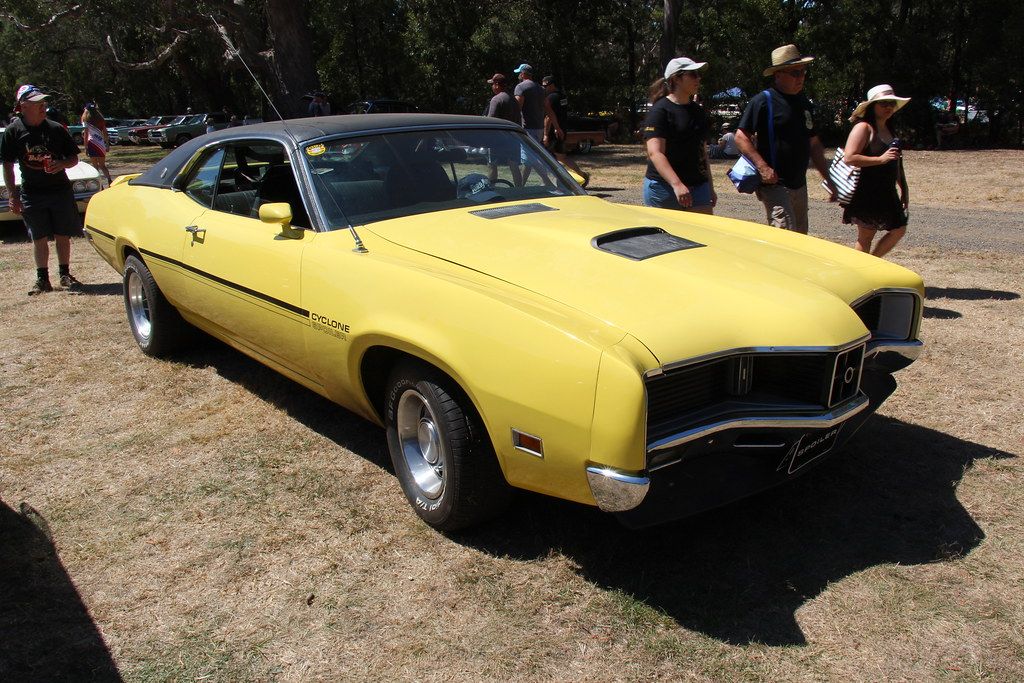
5. **Mercury Cyclone Spoiler: The Track Force That Stayed in the Shadows**The Mercury Cyclone Spoiler was, without a doubt, a force to be reckoned with on the race track during its brief production run from 1969 to 1971. Built with serious performance intentions, these machines were equipped to handle the rigors of competition, demonstrating impressive speed and handling capabilities that often surprised rivals. It was a clear statement from Mercury that they were serious about high-performance motoring.
However, the Cyclone Spoiler faced an uphill battle in the showroom. Mercury, positioned as a mid-tier brand under the vast Ford umbrella, simply didn’t possess the same marketing muscle or brand recognition as its more established and often flashier competitors. This meant the Cyclone Spoiler, despite its inherent qualities, often found itself operating in the shadows, struggling to attract the attention it deserved from potential buyers.
Even with its significant potential and track-proven performance, the Mercury Cyclone Spoiler never quite captured the public’s imagination in the way some other muscle cars did. It lacked the widespread buzz and cultural cachet that could elevate it beyond its formidable engineering. This absence of a strong public connection contributed significantly to its struggle for broader market acceptance and ultimately, its eventual fade from popular memory.
This has regrettably led to its relative obscurity in the grand tapestry of muscle car history. While collectors and dedicated enthusiasts recognize its value and unique place, the Mercury Cyclone Spoiler remains a lesser-known gem, a testament to what a capable car can achieve on the track even if it doesn’t quite win the hearts of the masses. It’s a powerful reminder that not every hero gets a parade.
Car Model Information: 2023 Nissan Rogue SV
Name: Mercury Cyclone Spoiler II
Manufacturer: Mercury (division)
Aka: Ford Torino Talladega
Production: 1969
ModelYears: 1969
Class: Race car
BodyStyle: fastback
Layout: FR layout
Designer: FoMoCo
Categories: All articles needing additional references, All articles with unsourced statements, Articles needing additional references from July 2025, Articles with short description, Articles with unsourced statements from April 2025
Summary: The Mercury Cyclone Spoiler II is a muscle car that was produced by Mercury in early 1969. The Mercury Cyclone Spoiler II was a special, more aerodynamic version of the Mercury Cyclone. It was produced specifically to compete against the Dodge Charger Daytona and Plymouth Superbird produced by Chrysler, and the nearly identical Ford Torino Talladega, in NASCAR stock car racing, and was sold to the public only because homologation rules required a minimum number of cars (500 in 1969) be produced and made available for sale to the public. A total of 503 cars were built in both Yarborough (285) and Gurney (215) versions, a during the first few weeks of 1969.
Get more information about: Mercury Cyclone Spoiler II
Buying a high-performing used car >>>
Brand: Mercury Model: Cyclone Spoiler
Price: $21,810 Mileage: 17,649 mi.

6. **Oldsmobile 442: The Well-Engineered Contender That Stayed in the Shadows**The Oldsmobile 442 arrived on the scene as a seriously well-engineered muscle car, a potent offering from a brand often associated with more conservative, upscale vehicles. This wasn’t just another V8 crammed into a mid-size body; the 442 package, particularly in its prime, combined robust engines with refined handling characteristics that allowed it to hold its own against the fiercest competitors from the likes of Chevrolet and Pontiac. It was a sophisticated beast, a testament to Oldsmobile’s commitment to performance during a pivotal era.
Yet, despite its impressive credentials and genuine capability, the 442 never quite managed to capture the same enduring fame as some of its GM stablemates, such as the legendary Pontiac GTO. Part of this challenge stemmed from Oldsmobile’s established brand image. Perceived as a more traditional, perhaps even staid, marque, it struggled to project the rebellious, youth-oriented aura that defined much of the muscle car movement. The 442, therefore, often found itself battling against preconceived notions.
This meant that over time, the Oldsmobile 442 became less celebrated, especially when compared to its flashier and more aggressively marketed siblings. While it delivered performance in spades and offered a compelling blend of power and poise, it simply didn’t resonate with the wider public in the same way. It became a choice for those in the know, a connoisseur’s muscle car rather than a mainstream icon, leading to its unfortunate oversight by many enthusiasts today.
Today, the 442 stands as a fascinating reminder of Oldsmobile’s performance aspirations. It’s a car that truly delivered, blending power with a touch of sophistication, making it a unique entry in the muscle car hall of fame. For collectors and those who appreciate understated power, the Oldsmobile 442 remains a cherished gem, proving that not every hero needs to shout the loudest.
Car Model Information: 1969 Oldsmobile 442
Name: Oldsmobile 442
Manufacturer: Oldsmobile
ModelYears: 1964–1980,1985–1987,1990–1991
Class: Muscle car
Layout: FR layout
Caption: 1971 Oldsmobile 442
Categories: 1960s cars, 1970s cars, 1980s cars, All articles with unsourced statements, Articles with short description
Summary: The Oldsmobile 4-4-2 is a muscle car produced by Oldsmobile between the 1964 and 1987 model years. Introduced as an option package for US-sold F-85 and Cutlass models, it became a model in its own right from 1968 to 1971, spawned the Hurst/Olds in 1968, then reverted to an option through the mid-1970s. The name was revived in the 1980s on the rear-wheel drive Cutlass Supreme and early 1990s as an option package for the new front-wheel drive Cutlass Calais.
The “4-4-2” name (pronounced “Four-four-two”) derives from the original car’s four-barrel carburetor, four-speed manual transmission, and dual exhausts. It was originally written “4-4-2” (with badging showing hyphens between the numerals), and remained hyphenated throughout Oldsmobile’s use of the designation. Beginning in 1965, the 4-4-2s standard transmission was a three-speed manual along with an optional two-speed automatic and four-speed manual, but were still badged as “4-4-2″s.
Because of this change, from 1965 on, according to Oldsmobile brochures and advertisements, the 4-4-2 designation referred to the 400 cubic inch engine, four-barrel carburetor, and dual exhausts. By 1968, badging was shortened to simply “442”, but Oldsmobile brochures and internal documents continued to use the “4-4-2” model designation.
Get more information about: Oldsmobile 442
Buying a high-performing used car >>>
Brand: Oldsmobile Model: 442
Price: $43,990 Mileage: 24,000 mi.

7. **Plymouth Road Runner Superbird: The Extreme Aero Warrior That Flew Too High**The Plymouth Road Runner Superbird is arguably one of the most iconic and visually audacious vehicles ever to grace American roads. Born from the cutthroat competition of NASCAR, its outrageous design – featuring a distinctive pointed nose cone and an absolutely colossal rear wing – wasn’t merely for show. These were meticulously engineered aerodynamic tools, designed to cheat the wind and give the Superbird an unbeatable edge on the superspeedways, a true marvel of form following function in the pursuit of speed.
However, what made the Superbird a track champion also limited its appeal as a mainstream muscle car. Produced in extremely limited numbers (only about 500 street versions of its Dodge Charger Daytona cousin were built, sharing a similar extreme aero design philosophy), its very purpose was specialized. It was designed for NASCAR, not for navigating city streets or blending into suburban driveways. This highly specialized, extreme design, while unforgettable, simply did not resonate with the general public looking for something more practical, or at least less overtly race-bred.
Consequently, the Superbird was more of a novelty, a wild experiment, rather than a vehicle destined for widespread commercial success. Its extreme aesthetics and single-minded focus on track dominance meant it was never intended to be a mass-market car. While it boasted serious power, often packing the legendary 426 Hemi V8 or a 440 Magnum, its limited appeal led to its quick disappearance from the market once NASCAR changed its rules for 1971, effectively ending the ‘aero-war’ era.
Today, the Plymouth Superbird has transformed from a quirky, specialized vehicle into a highly sought-after, niche collector’s item. Its rarity, its unforgettable looks, and its direct connection to a legendary era of motorsports make it a prized possession for enthusiasts. It stands as a monument to engineering extremism and a testament to a time when automakers dared to build something truly outlandish, leaving an indelible mark on automotive history.
Car Model Information: 2023 Nissan Rogue SV
Name: Plymouth Superbird
Manufacturer: Plymouth (automobile)
Wheelbase: 115.8 in
Abbr: on
Length: Convert
Width: 76.4 in
Height: 61.4 in
Weight: Convert
Production: 1970
Assembly: Detroit
Class: muscle car,race car
BodyStyle: coupe
Platform: Chrysler B platform
Layout: FR layout
Engine: cvt,Chrysler Hemi engine,V8 engine,cvt,Chrysler RB engine#440,V8 engine
Related: Plymouth Road Runner,Dodge Charger Daytona
Transmission: Automatic transmission,TorqueFlite
Designer: Gary Romberg
Categories: 1970s cars, All articles with unsourced statements, Articles with short description, Articles with unsourced statements from March 2010, Commons category link is on Wikidata
Summary: The Plymouth Superbird is a highly modified, short-lived version of the Plymouth Road Runner with applied graphic images as well as a distinctive horn sound, both referencing the popular Looney Tunes cartoon character Road Runner. It was the factory’s follow-up stock car racing design, for the 1970 season, to the Dodge Charger Daytona of 1969, and incorporated many engineering changes and modifications (both minor and major) garnered from the Daytona’s season in competition.
The car’s primary rivals were the Ford Torino Talladega and Mercury Cyclone, a direct response to the Mopar aero car. It has also been speculated that a motivating factor in the production of the car was to lure Richard Petty back to Plymouth. Both of the Mopar aero cars famously featured a protruding, aerodynamic nosecone, a high-mounted rear wing and, unique to the Superbird, a horn mimicking the Road Runner’s signature “beep, beep.”
Superbirds equipped with the top-of-the-line 426 cu in (7.0 L) Hemi engine with a pair of four barrel Carter AFB carburetors (2x4bbl) producing 425 hp (317 kW) could accelerate from 0 to 60 mph (97 km/h) in 5.5 seconds.
Get more information about: Plymouth Superbird
Buying a high-performing used car >>>
Brand: Plymouth Model: Road Runner Superbird
Price: $21,810 Mileage: 17,649 mi.
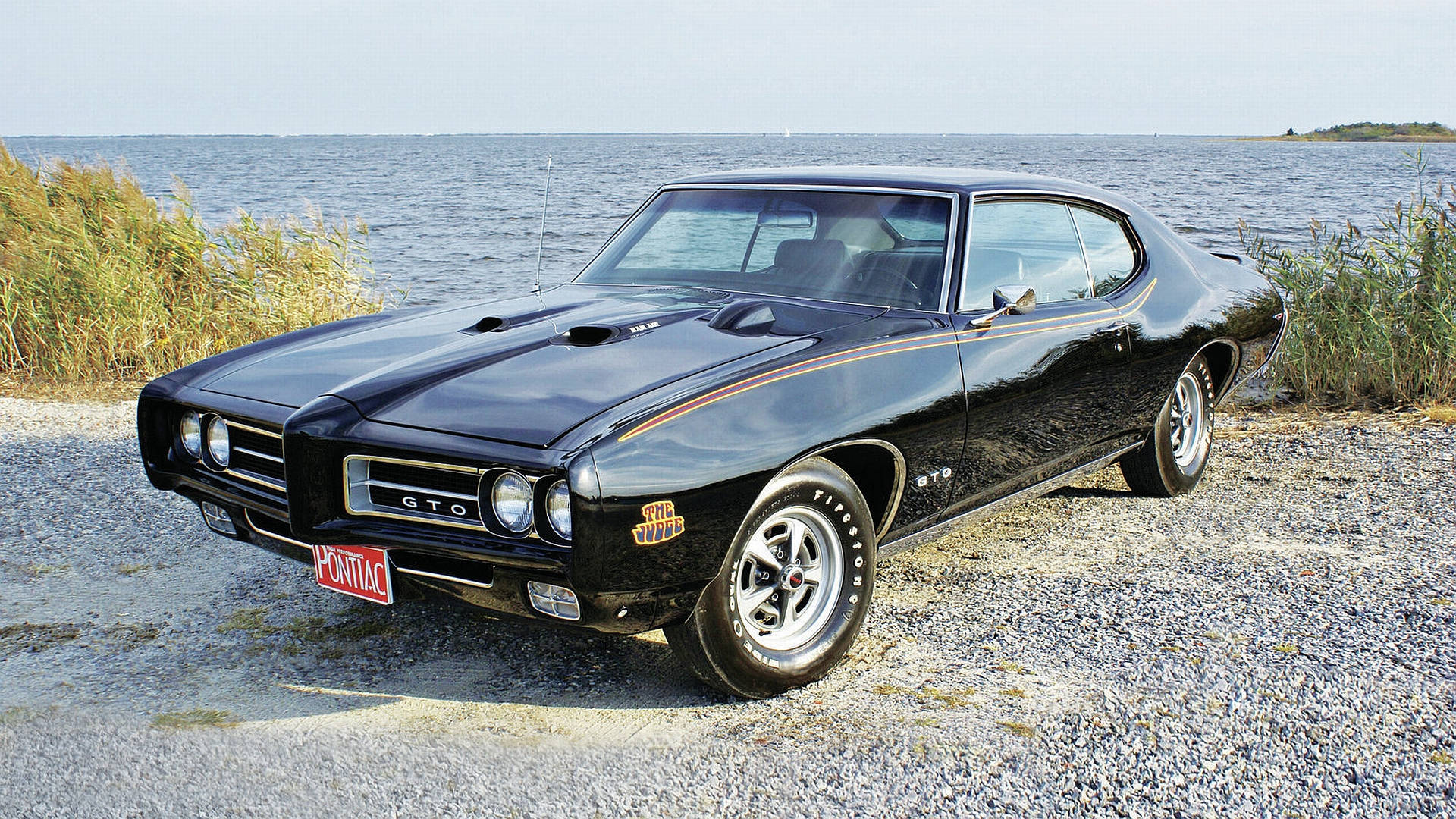
8. **Pontiac GTO Judge: The Bold Statement That Lost Its Edge**The Pontiac GTO, often credited with igniting the entire muscle car revolution in 1964, was a legend from the start. By 1969, Pontiac decided to double down on its aggressive image with the introduction of the GTO Judge. This iteration was a bold statement, boasting eye-catching graphics, a distinctive rear spoiler, and an undeniable attitude that screamed performance. It came with powerful engines like the Ram Air III or the Ram Air IV, solidifying its reputation as a serious street star and a symbol of Pontiac’s performance prowess.
However, even with its audacious styling and performance pedigree, the GTO Judge found itself navigating a rapidly changing automotive landscape. By the early 1970s, the muscle car era was under siege from a confluence of external pressures. While the 1971 Judge, for instance, still offered a potent 455 HO V8 with 335 horsepower, its power ratings were already beginning to reflect the industry’s need to adapt to new realities.
The real challenge for the Judge, and many other muscle cars, lay in the tightening grip of government regulations and the ominous shadow of rising insurance premiums. Emission standards began to demand changes to engine design, leading to lower compression ratios and a subsequent reduction in horsepower. This diminishing performance, combined with the bold styling that often made it a target for higher insurance surcharges, began to erode its appeal among buyers seeking raw, unadulterated power.
Consequently, the GTO Judge, despite its iconic status and memorable presence, saw its popularity decline as its performance edge was dulled by regulatory mandates. After 1971, the writing was on the wall, and the Judge faded into obscurity as the muscle car era waned. While it remains one of Pontiac’s most collectible muscle cars today, its rapid decline illustrated how quickly market conditions and external pressures could bring even the most charismatic models to their knees.
Car Model Information: 2023 Nissan Rogue SV
Name: Pontiac GTO
Caption: 2005 Pontiac GTO
Manufacturer: Pontiac (automobile),Holden
Class: Mid-size car,Compact car,Mid-size car
Production: 1963–1974,2003–2006
Predecessor: Pontiac Tempest
Layout: Front-engine, rear-wheel-drive layout
ModelYears: 1964-1974 2004-2006
Categories: 1970s cars, 2000s cars, All articles with unsourced statements, Articles with short description, Articles with unsourced statements from October 2008
Summary: The Pontiac GTO is a front-engine, rear-drive, two-door, and four-passenger automobile manufactured and marketed by the Pontiac division of General Motors over four generations from 1963 until 1974 in the United States — with a fifth generation made by GM’s Australian subsidiary, Holden, for the 2004 through 2006 model years.
The first generation of the GTO is credited with popularizing the muscle car market segment in the 1960s. Some consider the Pontiac GTO to have started the trend with all four domestic automakers offering a variety of competing models.
For the 1964 and 1965 model years, the GTO was an optional package on the intermediate-sized Pontiac LeMans. The 1964 GTO vehicle identification number (VIN) started with 22, while the 1965 GTO VIN began with 237. The GTO was designated as a separate Pontiac model from 1966 through 1971 (VIN 242…). It became an optional package again for the 1972 and 1973 intermediate LeMans. For 1974, the GTO was an optional trim package on the compact-sized Ventura.
The GTO model was revived for the 2004 through 2006 model years as a captive import for Pontiac, a left-hand drive version of the Holden Monaro, itself a coupé variant of the Holden Commodore.
Get more information about: Pontiac GTO
Buying a high-performing used car >>>
Brand: Pontiac Model: GTO Judge
Price: $21,810 Mileage: 17,649 mi.

9. **Chrysler 300 Hurst: The Luxury Muscle That Missed the Mark**The 1970 Chrysler 300 Hurst was an intriguing and unique collaboration, blending the raw power of a muscle car with the opulent trappings of a luxury cruiser. This wasn’t a stripped-down, lightweight drag machine; it was a full-sized, sophisticated vehicle designed to offer both blistering acceleration and plush comfort. Powered by a potent 440-cubic-inch V8 engine, it certainly packed a punch, showcasing that luxury didn’t necessarily mean sacrificing performance during this era.
However, this very blend of power and luxury, coupled with its substantial size, ultimately became its Achilles’ heel in the eyes of many core muscle car enthusiasts. The prevailing ethos of the muscle car movement celebrated lean, mean, and aggressive machines focused primarily on straight-line performance. The 300 Hurst, with its emphasis on comfort and its larger dimensions, seemed out of step with this philosophy, alienating those who sought raw, unadulterated power without the added refinement.
Unlike its more spartan stablemates that prioritized performance above all else, the 300 Hurst’s focus on luxury over raw, aggressive performance simply didn’t resonate with the target audience. It was a car that aimed to be two things at once – a powerful brute and a comfortable grand tourer – but in doing so, it struggled to define its niche clearly enough to capture widespread admiration among either segment of the market. It was a grand experiment that didn’t quite land.
Over the years, the Chrysler 300 Hurst has unfortunately become a somewhat forgotten relic in the grand narrative of muscle cars. It’s often overshadowed by Chrysler’s more overtly iconic and aggressive models, such as the Hemi ‘Cuda or the Charger. Today, it stands as a testament to an era of experimentation, a powerful yet ultimately overlooked machine that serves as a fascinating footnote in the history of American performance vehicles.
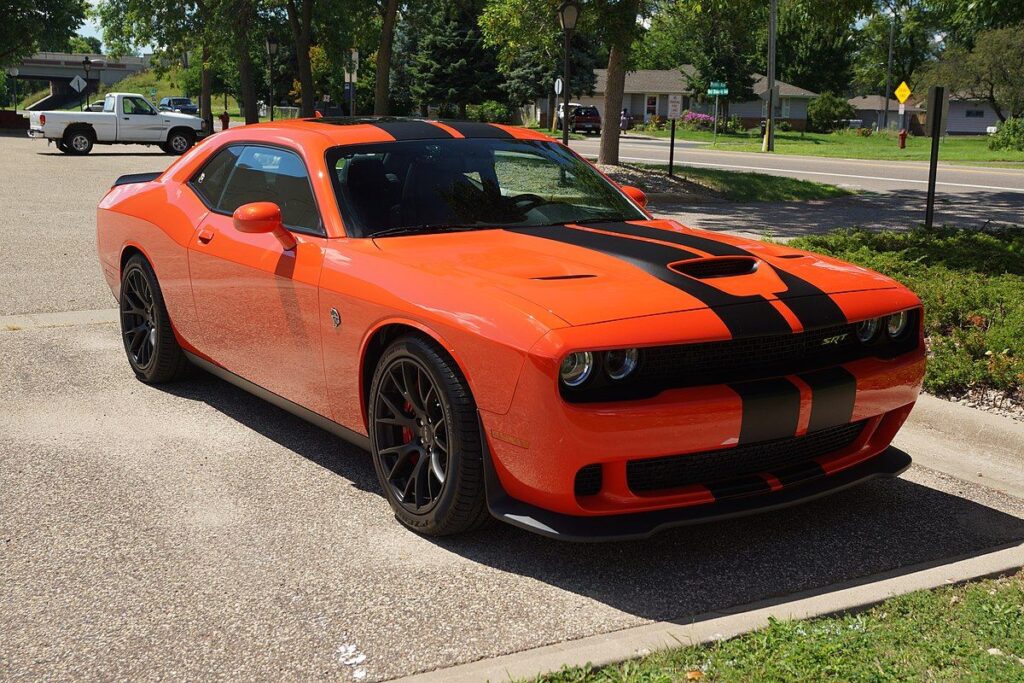
**The Systemic Reasons for the Muscle Car Era’s Demise**
While individual cars had their unique struggles, the broader disappearance of muscle cars was not a coincidence. It was a systemic shift, a perfect storm of converging factors that collectively brought the golden age of American performance to an abrupt halt. This wasn’t a sudden collapse but a gradual erosion, an industry-wide reevaluation forced by external pressures that changed the automotive landscape forever.
**Government Regulations: The Tightening Noose**
One of the most significant nails in the muscle car coffin was the advent of increasingly stringent government regulations. The early 1970s saw the U.S. government implement stricter standards aimed at improving vehicle safety, emissions, and fuel efficiency. A landmark piece of legislation was the Clean Air Act of 1970, signed into law by President Richard Nixon, which set emissions standards for automobiles and other sources of pollution.
This act, and subsequent regulations, forced automakers to fundamentally redesign their engines. To comply, compression ratios were lowered, catalytic converters were introduced, and engine tuning became less about maximum horsepower and more about cleaner exhaust. The result? A noticeable drop in power ratings, even for legendary engines. For instance, a 1970 Camaro Z28 with a 350 cubic inch V8 produced 360 horsepower, but by 1975, a similar engine was detuned to just 155 horsepower, marking a stark contrast in performance.
This shift profoundly impacted the very essence of muscle cars, which were defined by their blistering speed and raw power. As engines became less potent, the primary appeal for enthusiasts waned. The aggressive, no-compromise machines of the 1960s struggled to exist in a new era focused on environmental responsibility and efficiency, transforming once mighty engines into shadows of their former selves.
**The Oil Crisis: Fueling the Retreat**
Just as automakers grappled with new regulations, a global event delivered another devastating blow: the 1973 oil crisis. Triggered by the OPEC oil embargo against countries supporting Israel, this crisis sent gasoline prices skyrocketing and led to widespread fuel shortages across the United States. Long lines at gas stations became a common, frustrating sight, making gas-guzzling muscle cars an impractical and increasingly unpopular choice for consumers.
Imagine the impact: the average price of a gallon of gas, which was around $0.35 in 1970, soared to over $0.50 per gallon by 1974 – a staggering 43% increase in just a few years. For cars known for their prodigious thirst for fuel, this economic reality was a death knell. Suddenly, efficiency, not sheer power, became the paramount concern for many buyers, completely redefining purchasing priorities in the automotive market.
The oil crisis was a turning point, accelerating the industry’s shift away from large, inefficient engines and towards smaller, more fuel-efficient vehicles. It wasn’t just about saving money; it was about ensuring you could even find fuel for your car. This dramatic change in consumer priorities cemented the decline of the muscle car, pushing it out of the mainstream and into a more niche, less practical role.
**Rising Insurance Rates: Pricing Out the Passion**
As if regulations and fuel shortages weren’t enough, another financial barrier emerged: rapidly rising insurance costs. During the muscle car boom of the 1960s and early 1970s, the high rates of accidents and fatalities associated with these high-performance vehicles caught the attention of insurance companies. Muscle cars, designed for speed and acceleration, were often driven recklessly, making their owners a high-risk demographic.
Insurance providers responded by significantly increasing premiums for muscle car drivers, sometimes by as much as $40 to $50 more per year compared to more standard vehicles. While these figures might seem modest today, in 1969, an extra $40 translated to roughly $293 in today’s money due to inflation. This made high-performance models prohibitively expensive, especially for the younger buyers who were at the very heart of the muscle car movement.
This financial burden meant that even if a buyer could afford the car itself, the ongoing cost of insurance became a major deterrent. The dream of owning a roaring V8 monster became financially out of reach for many, effectively pricing out a significant portion of the muscle car’s traditional audience. It was a quiet but effective way to discourage the purchase of these potent machines, further contributing to their decline.
**Changing Tastes: The Evolution of Desire**
Beyond the external pressures, consumer tastes themselves began to evolve, moving away from the raw, uncompromising nature of muscle cars. The end of the muscle car era coincided with the beginning of a new automotive design and technology era, one that prioritized efficiency, safety, and environmental friendliness. The market began to bifurcate, creating new trends that left muscle cars behind.
On one hand, there was a push towards smaller, more efficient engines and compact designs. Vehicles like the Ford Pinto began to gain traction, prioritizing aerodynamics and fuel economy over sheer power. The iconic Chevrolet Camaro, for example, underwent a redesign in 1974, featuring a more streamlined body and significantly smaller engine displacements. The largest engine offered in a Camaro, once a 396 cubic inch V8 producing 375 horsepower, was now a 350 cubic inch V8 generating a mere 185 horsepower.
On the other hand, the market saw the rise of the “personal luxury car.” These were larger, more luxurious vehicles designed for cruising rather than speed, emphasizing plush interiors, sophisticated styling, and comfort. Models like the Ford Thunderbird and Cadillac Eldorado captivated buyers seeking refinement and status. This dual shift in consumer preference, towards either efficiency or luxury, left little room for the gas-guzzling, performance-focused muscle car, marking a fundamental change in what Americans wanted from their automobiles.
**The Fall of Muscle Cars: A Fading Roar**
By the 1974 model year, the golden era of muscle cars had officially concluded. Many automakers had ceased production of their high-performance models, and the few remaining were significantly detuned from their earlier, more formidable versions. The vibrant, competitive landscape that once saw automakers pushing the limits of power and speed had given way to an era of compromise and practicality.
This shift was compounded by changes in how horsepower was measured. The move from SAE gross (measured without accessories) to SAE net (measured in real-world conditions with accessories) in 1972 led to lower, more accurate, but seemingly less impressive horsepower ratings. This, combined with the actual detuning of engines due to regulations, created a perception of rapid decline in power, further eroding public interest. The muscle car, as it was known, had become a shadow of its former self, a powerful roar that had faded to a whisper.
**Conclusion: The Enduring Legacy of the Era’s Titans**
The golden muscle car era, a period of unparalleled innovation and exhilarating excitement, may have drawn to a close, but its spirit undeniably lives on. While government regulations, the looming specter of the fuel crisis, escalating insurance rates, and the evolving tides of consumer tastes collectively ushered out these titans of the road, their legacy endures with an unwavering strength that defies their physical absence from modern showrooms.
These were more than just cars; they were symbols of a generation’s passion for freedom, power, and an unmistakable sense of American ingenuity. Even though their mainstream dominance has passed, the admiration for these machines has not diminished. Today, countless classic cars from this unforgettable period are meticulously restored, passionately admired, and celebrated by a dedicated community of car enthusiasts, ensuring that their roar, though historical, is never truly silenced.
Car Model Information: 2021 Volkswagen Tiguan 2.0T SE R-Line Black
Name: Chrysler 300 letter series
Caption: 1964 Chrysler 300-K Coupe
Class: Personal luxury car,Muscle car,Grand tourer
Manufacturer: Chrysler Corporation
Production: 1955–1965,1970
Assembly: Detroit,Michigan
Layout: Front-engine, rear-wheel-drive layout
Predecessor: Chrysler Saratoga
Successor: Chrysler 300 non-letter series
Categories: 1950s cars, 1960s cars, All Wikipedia articles written in American English, All articles containing potentially dated statements, All articles with unsourced statements
Summary: The Chrysler 300 “letter series” are high-performance personal luxury cars that were built by Chrysler in the U.S. from 1955 to 1965 and were a sub-model from the Chrysler New Yorker. After the initial year, which was named C-300 for its standard 300 hp (220 kW) 331 cu in (5.4 L) FirePower V8, the 1956 cars were designated 300B. Successive model years were given the next letter of the alphabet as a suffix (skipping “i”), reaching the 300L by 1965, after which the model sequence was discontinued while the “300” remained. At its introduction it was advertised as “America’s Most Powerful Car”.
The 300 “letter series” cars were among the vehicles built by Chrysler after World War II that focused on performance, and thus can be considered the beginning of the muscle car, though full-sized and more expensive. Chrysler had a long history of producing race car products going back to the Chrysler Six that was entered in the 1925 24 Hours of Le Mans, 1928 24 Hours of Le Mans, 1929 24 Hours of Le Mans, and the Chrysler Imperial Eight roadster in the 1931 24 Hours of Le Mans. The 1955 C-300 and the 1956 300B were raced with very little modification at NASCAR races to include Watkins Glen International where it won races multiple times.
The automaker reintroduced the 300 designations again for performance-luxury sedans in 1999, using the 300M nameplate from 1999 to 2004, and expanding the 300 series with a reintroduction of a new Hemi-engineered V8 installed in the 300C, the top model of a new Chrysler 300 line, a new rear-wheel drive car launched in 2004 for the 2005 model year.
Get more information about: Chrysler 300 letter series
Buying a high-performing used car >>>
Brand: Chrysler Model: 300 Hurst
Price: $16,773 Mileage: 68,625 mi.
The muscle car era will forever be etched into automotive history as a time when American automakers dared to push the very limits of design and performance. It was a period of unbridled creativity and engineering bravado, creating vehicles that, despite their eventual fade, continue to inspire awe and a deep-seated nostalgia. These unforgettable machines, once the kings of the road, remind us that true legends, even when they recede from the spotlight, never truly die; they simply evolve into cherished icons of a bygone, glorious age.

